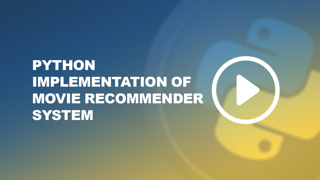Create a Telegram Bot using Python
Create a Telegram Bot Using Python | Step-by-Step Guide
In this video, we’ll guide you through creating a Telegram bot using Python. Telegram bots are automated programs that can perform a variety of tasks on the Telegram messaging platform, such as sending messages, handling commands, managing groups, and providing services like weather updates or reminders. This tutorial is perfect for Python developers who want to explore chatbot development and leverage Telegram’s API to build interactive and useful bots. By the end of this tutorial, you’ll be able to create a functional Telegram bot, customize its behavior, and deploy it for real-world use.
What is a Telegram Bot?
A Telegram bot is an automated software application that interacts with users on the Telegram platform. Bots can be programmed to respond to messages, execute commands, provide information, or even play games. They use Telegram’s Bot API to send and receive messages, handle multimedia, manage chat groups, and more. Telegram bots can be used for a wide range of purposes, including customer service, notifications, data collection, and entertainment. In this video, we’ll show you how to create a basic Telegram bot using Python, and expand its capabilities to suit your needs.
Key Points Covered:
Introduction to Telegram Bots and Their Applications: Learn about the various uses and benefits of Telegram bots, such as automating tasks, enhancing user engagement, and providing 24/7 services. We’ll discuss common scenarios where Telegram bots can be applied, from customer support and marketing to educational tools and gaming.
Setting Up Your Development Environment: We’ll start by setting up the necessary tools and libraries for building a Telegram bot in Python. You’ll learn how to install Python, set up a virtual environment, and install the required libraries such as python-telegram-bot, which provides a simple interface to interact with Telegram’s Bot API. We’ll also cover creating a new bot on Telegram using the BotFather and obtaining the bot token needed for authentication.
Creating Your First Telegram Bot with Python: Once the setup is complete, we’ll dive into coding the bot’s basic functionality. You’ll learn how to:
- Set Up the Bot and Connect to Telegram’s API: Using the bot token, we’ll configure your bot to connect to Telegram and start listening for messages.
- Handling Messages and Commands: We’ll cover how to respond to user messages and implement commands like /start and /help that provide information and guide users on how to interact with your bot.
- Sending Automated Responses: Learn how to automate responses to specific keywords or phrases, making your bot more interactive and engaging.
Enhancing Bot Functionality with Advanced Features: To make your bot more versatile, we’ll explore additional features such as:
- Inline Queries: Allow users to interact with your bot from any chat by providing real-time results for inline queries.
- Buttons and Keyboards: Create custom keyboards and inline buttons to offer a more interactive user interface, enabling users to make selections or trigger actions without typing commands.
- Handling Media and Files: Learn how to manage multimedia messages, including sending and receiving photos, videos, documents, and more.
Deploying the Bot on a Web Server: For your bot to be available online and handle requests continuously, it needs to be deployed on a server. We’ll demonstrate how to deploy your bot using cloud platforms like Heroku, AWS, or any other service that supports Python applications. This section will include setting up webhooks to receive updates in real-time and ensuring that your bot is always online and responsive.
Testing and Debugging Your Telegram Bot: Testing is a crucial part of developing a robust bot. We’ll show you how to test your bot’s functionality, troubleshoot common issues, and refine the bot’s behavior based on user feedback. You’ll also learn how to use Telegram’s debugging tools to monitor the bot’s activity and ensure it performs as expected.
Ensuring Compliance with Telegram’s Bot Policies: Telegram has guidelines and best practices that bot developers must follow. We’ll cover important compliance topics such as user data privacy, respecting user preferences, and providing clear instructions on how to use your bot. Adhering to these guidelines will help ensure that your bot provides a positive experience and aligns with Telegram’s standards.
Why Build a Telegram Bot in Python?
Building a Telegram bot in Python is an excellent way to enhance your programming skills and explore the potential of chatbots. Python’s simplicity and the availability of powerful libraries like python-telegram-bot make it a great choice for developing bots that can handle a wide range of tasks. Whether you’re creating a bot for personal use, business, or entertainment, this project will give you hands-on experience with APIs, web development, and automated communication, making it a valuable addition to your skillset and portfolio.
Topics Included:
Introduction to Telegram Bots: Understanding the benefits and practical applications of Telegram bots.
Setting Up the Development Environment: How to install and configure Python and the necessary libraries for bot development.
Building and Configuring the Bot: Step-by-step guide to creating a Telegram bot, handling messages, and adding commands.
Enhancing and Deploying the Bot: Techniques for adding advanced features, handling multimedia, and deploying the bot to the web.
Testing, Debugging, and Compliance: Tips for testing your bot, refining its behavior, and ensuring adherence to Telegram’s policies.
For a detailed guide and complete code examples, check out the full article on GeeksforGeeks: https://www.geeksforgeeks.org/create-a-telegram-bot-using-python/.









